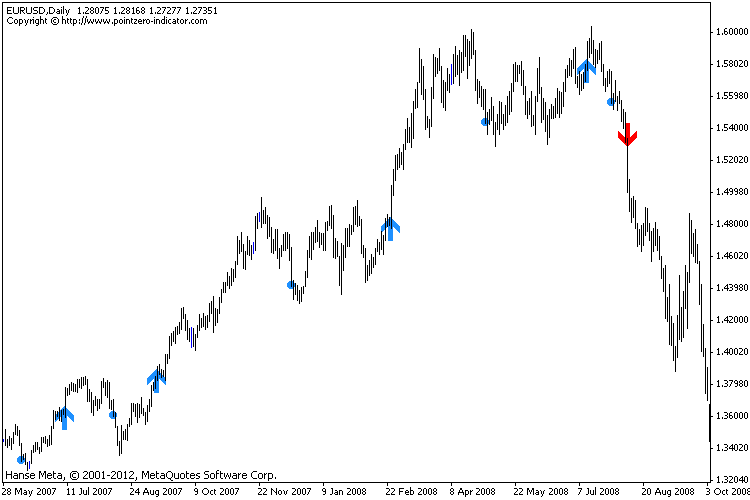

Six paradigms in organizational decision-making theory, which align more or less, have been identified. They do so by evaluating the advantages and disadvantages of each possible outcome and then choosing the one most appropriate to achieve their desired objective. However, in its original formulation classical decision concept assumes ‘pure’ rationality. Some tackles this assumption in accommodating the notions of risk or uncertainty in decisions. This approach is also an example of the normative decision concept. While this paradigm offers an apparent improvement over bureaucratic concept, it still fails to address the ‘mediating processes that lead to a decision’.
The sender & receiver’s IP address are placed in the header by the network layer. Microcomputers, today, aren’t just the most popular computers; they’re the only kind of computer currently being made and sold commercially. Even a large IBM mainframe is a microcomputer, as it is built from central processing units that are microprocessors, where the entire CPU is on a single monolithic chip. Tour sector is also using PCs for making vouchers, bills, invoices, etc. and thus save time, whereas the travel agencies use them for ticketing. At the same time they are being used for information seeking, storage, analysis and retrieving. Due to these factors and the fact that micro-computers can be used at home and schools for education and entertainment there has been a spectacular increase in their numbers since their first arrival as hobby kits in the U.S.
- The elements of DSS such that they are intended to support decisions required at relatively infrequent time intervals such as one week, 10 days, one month, or longer planning horizon.
- The system should be able to process huge volumes of textual data.
- DSS can be categorized into communication-driven, knowledge-driven, data-riven, model-driven, and documentation-driven.
- Simple file systems accessed by query and retrieval tools provide the most elementary level of functionality.
It supports one or 2 diskette drives of 360 KB each for random access secondary memory. A PC usually comes with a standard keyboard, a visual display unit and a dot matrix printer. A PC is usually operated by a single user and not suitable for applications requiring very large storage capacities.
What is a Decision Support System (DSS)?
It supplies easy accessibility to inside and external data related to organizational targets. It is usually thought-about a specialized type of determination assist system . PCI DSS is a set of security requirements that must be followed by Organisations that accept, process, store, or transmit payment card data. The standard is mandated by the major payment card brands, including Visa, Mastercard, American Express, Discover, and JCB. Therefore, if an Organisation accepts payment cards from any of these brands, PCI DSS Compliance is mandatory.
How many steps are there in decision-making process in DSS?
Decision-Making: A three-stage process involving intelligence, design, and choice.
Due to this, the decision maker has to evaluate the objectives and the means simultaneously. It is normally recognized that the management does not have access to all the relevant information for making a decision. It neither has the expertise nor the capacity to process all the possible information available. Due to these limitations, management lacks the perfect knowledge of the decision situation.
Below are some of the applications that work on the core fundamentals of KWS. The « expertise » consists of knowledge about a particular domain, understanding of problems within that domain, and « skill » at solving some of these problems. It refers to a class of analytical applications that search for hidden patterns in a database. Data mining is a process of sifting through large amounts of data to produce data content relationships.
B) Design
However, these information systems can be broadly categorized into two categories as follows on the basis of their roles in operations and management of a business. The three main components of the decision support system are-database, software system, and user interface. While lecturers have perceived DSS as a software to help determination making course of, DSS can also be a tool to facilitate organizational processes. A determination support system is an data system that supports business or organizational decision-making actions.
What are 4 main components of DSS?
- Statistical models. These models are used to establish relationships between events and factors related to that event.
- Sensitivity analysis models. These models are used for “what-if” analysis.
- Optimization analysis models.
- Forecasting models.
- Backward analysis sensitivity models.
It is essentially important to train the users to ensure effective and optimal use of DSS. It is a state institution and acquires, processes, conserves and makes available information to the public – published in the country and elsewhere relevant to the country or national activities. Through their specialised departments they provide technical advice to all the libraries and their major publication is the “National Bibliography”.
Designing and Developing Decision Support Systems
The usual sales talk as well as computer advertisements try to lure buyers to invest on hardware as if software is something which is automatically available with hardware . Characteristic of a worm program is that it can relocate i.e. copy itself to another machine on network. They can help to sabotage systems but can also perform useful tasks. Though the system is thoroughly tested before the implementation, yet the system is never foolproof and errors always continue to exist.
Initially a rough cost-benefit analysis will be sufficient for the top management to take a decision either in favour of or against the proposed CBIS. The information systems are designed for the job positions rather than for individuals. In the case of an electronic bulletin board, a given message Is transmitted In a broadcast mode to a group or users called recipients.

Further both additional hardware and software are required to do networking. Copyright is another form of legal protection which software people can resort to for protection of their products. The former is concerned with the use of information which is copyrighted and stored in retrieval systems.
In general, DSS is usually referred to computer based information system that performs a supporting role in decision making process. Some examples of business intelligence technologies include data warehouse, dashboards, ad hoc reporting, data discovery tools, and cloud data services. It has transformed the way critical decisions can be made in the digital age.
Diagnosis of a Decision Making Process
Analysis based on data empowers schools and parents to make the best decision for students. Pathshala mobile app is designed to achieve the Sustainable Development Goals (Goal no. 4) as well i.e. equitable, quality, inclusive education, and lifelong learning for all and bridging the digital divide. It is developed for showcasing and disseminating all educational e-resources. Compatibility with software as also the purchase of software are two aspects which deserve much attention and specification by the buyer.
The group decision support system’s tools and procedures help to improve the quality and effectiveness of group meetings. Some group decision-making procedures are supported by groupware and web-based technologies for electronic meetings and videoconferencing, although their primary function is to allow communication between decision-makers. A group decision support system is an interactive computer-based system that facilitates a number of decision-makers in finding solutions to problems that are unstructured in nature.
What are the various levels of classification of DSS?
Holsapple and Whinston classify DSS into the following six frameworks: text-oriented DSS, database-oriented DSS, spreadsheet-oriented DSS, solver-oriented DSS, rule-oriented DSS, and compound DSS.
DSS can be categorized into communication-driven, knowledge-driven, data-riven, model-driven, and documentation-driven. The MIS is sustained by database in its endeavour to support the management in decision making. Organization needs that MIS would give them a ‘competitive strength’.
What are examples of decision support systems?
Requirements and provides a roadmap for the development process. These are designed to show alluring advertisements and redirect the search engines to paid advertisements to get access to user’s data. It is a technique which prevents the destructive processes to be visible as running program and making them able to keep on destroying the system. These are installed usually by Trojans and pretend to be operating system files which are necessary for functioning of the system so user will not delete them. Trojans are the programs that seem to do some harmless activity and actually do some malicious activity causing damage immediately like the wooden horse of Troy. For example, it may obtain a password or may modify records in protected files.
One of the core challenges facing CDSS is problem in incorporating the extensive amount of scientific research being published on an ongoing foundation. The Self-Assessment Questionnaires are documents designed to help Organisations determine their Compliance Status. There are nine different SAQs available, each tailored to different types of Organisations and payment processing methods. By completing the relevant SAQ, Organisations can identify the Controls they must implement to meet the PCI DSS Requirements. Organization is a social entity, bringing together people who work together to achieve a specific goal. To reach it, it uses decision-making processes, so the organization is a centre of decision-making by excellence.

It is a complementary network of hardware and software program cooperating to collect, course of, retailer and distributes information to help the managerial role to increase business values and profits. Furthermore, MIS takes an input of enormous quantity of knowledge and outputs abstract report. Also post-dating Nutt’s work, but sharing many of the features of his ‘open systems’ model, is the emerging sixth paradigm of naturalistic decision-making. This approach has yet to enjoy wider adoption in organizational decision-making process. These six models offer a wide theoretical range from which to choose.
Failure to comply with the standard can result in fines, restrictions on accepting payment cards, and damage to the Organisation’s reputation. It is difficult to share to compare rationally the weights and prevalence of those conflicting value sets and to do so successfully require heavy reliance on intuition, judgment, and other non rational factors. Management is to rely in part on their intuitive understanding of the net effect of the decisions across multiple objectives, but it ought to do so while taking advantage of decision support which can better inform the intuition. In this type of classification, the need for information intensifies each time one climbs a level in the pyramid. The characteristics of the requested information are specific to each level.
As a result of the documentation, the development process is recorded, and the knowledge and expertise of the team is preserved. Also, documentation helps to ensure that stakeholders can maintain and use discuss the various steps in dss development the system effectively in the future. Another form of software purchase is when the buyer contracts with the supplier of the equipment to provide tailor-made software for the specific needs of the buyer.
What are the various steps of DSS development?
A DSS Systems Design and Development hierarchy. The systems development life cycle (SDLC) approach is based on a series of formal steps, including the following seven steps: 1) Confirm user requirements; 2) Systems analysis; 3) System design; 4) Programming; 5) Testing; 6) Implementation; and 7) Use and Evaluation.


No responses yet